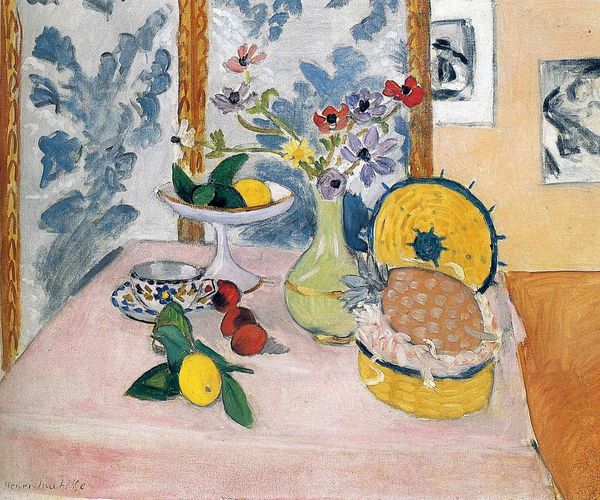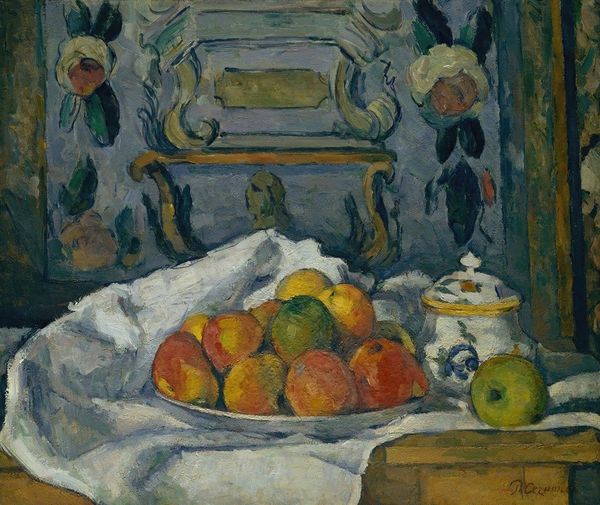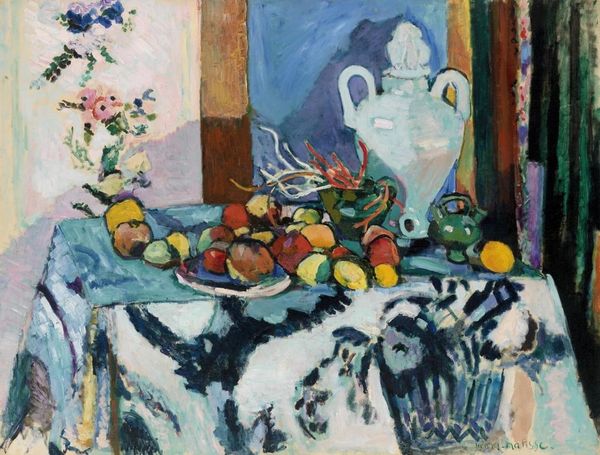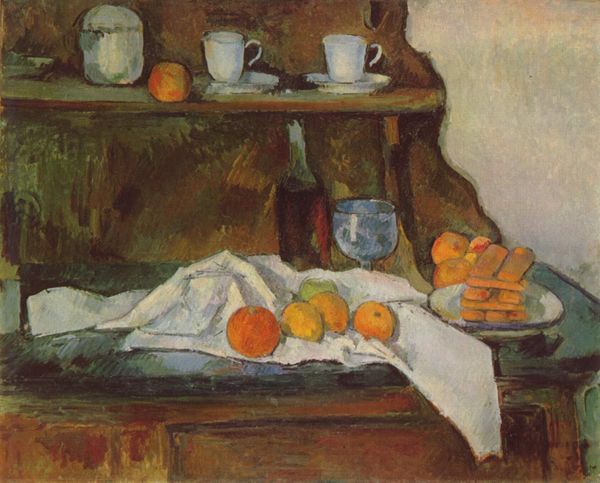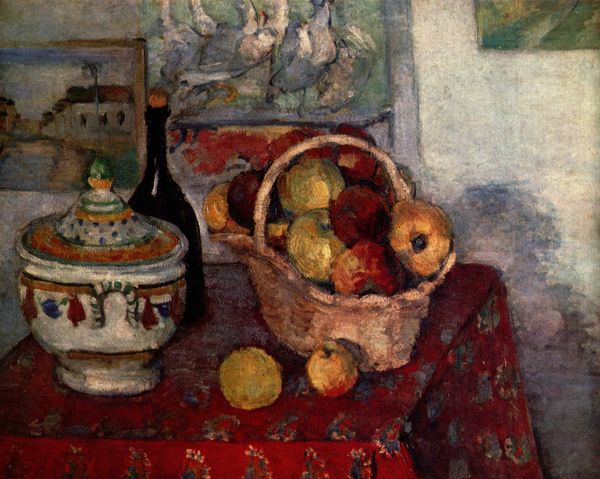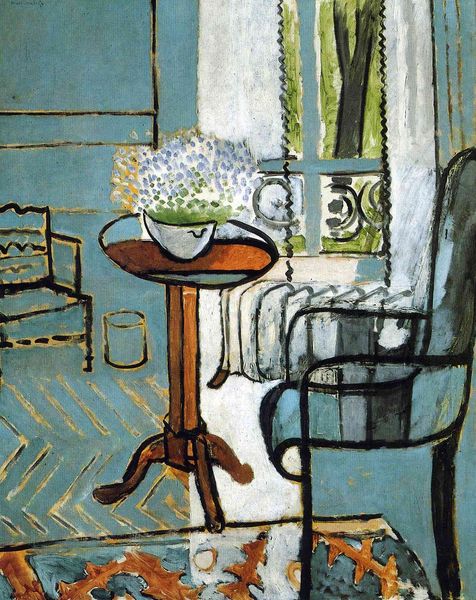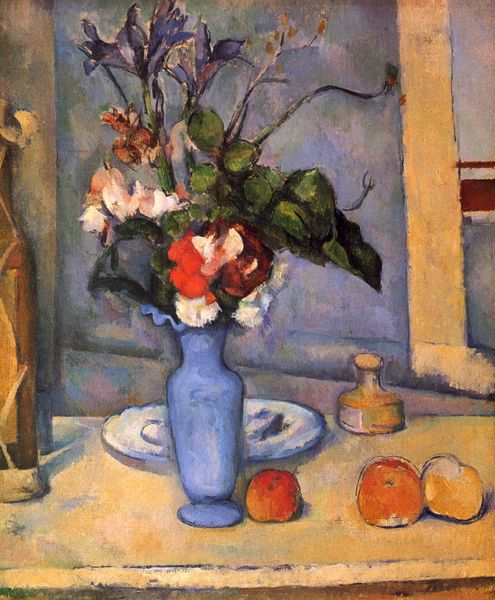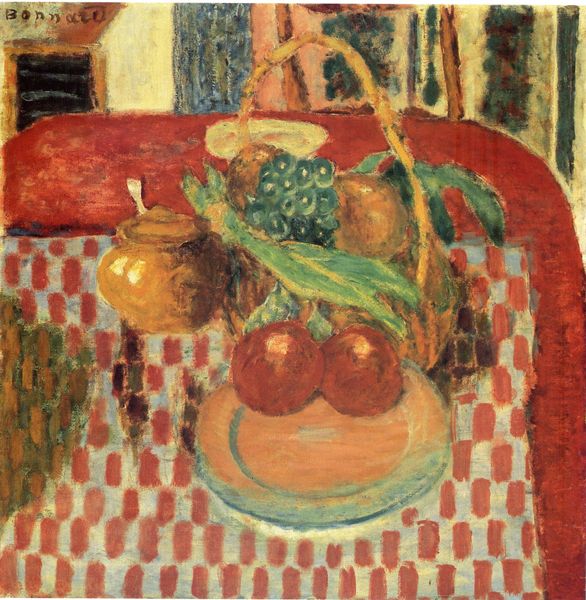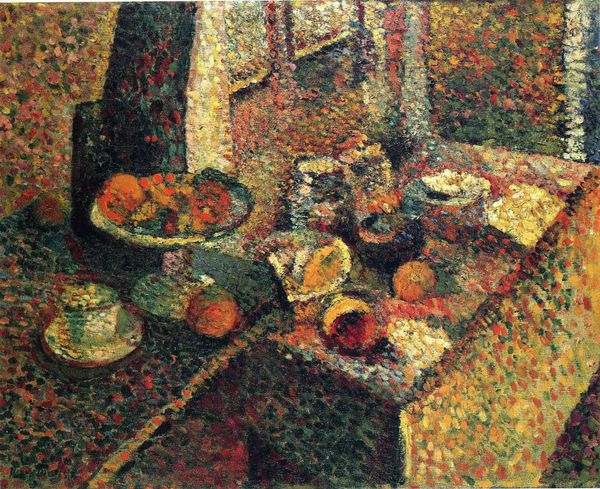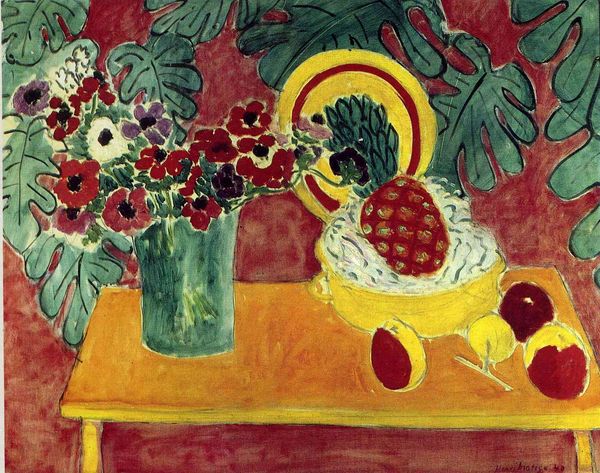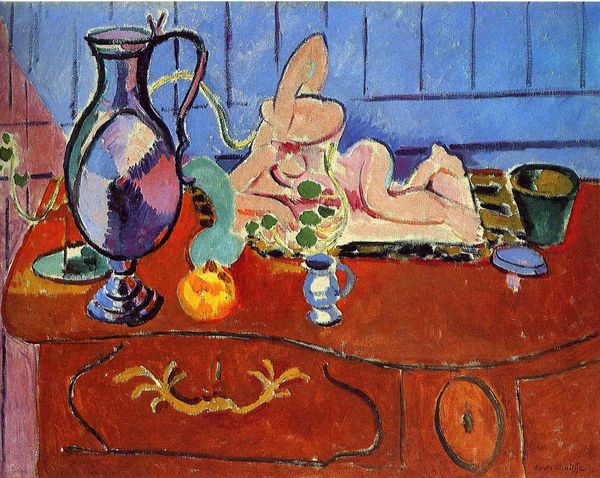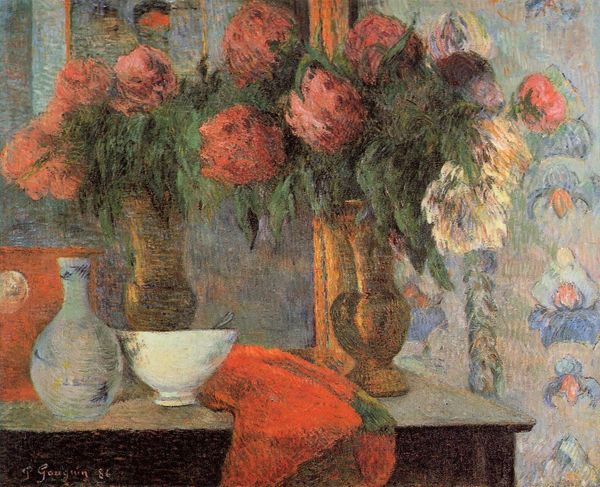
painting, oil-paint
#
still-life
#
painting
#
impressionism
#
oil-paint
#
oil painting
#
intimism
Copyright: Public domain
Editor: Here we have Pierre Bonnard’s, Corner of the Dining Room, an oil painting showcasing what I think is a bourgeois interior. The overall impression is of domestic comfort, with a hint of mystery—like a stage set. What social narratives do you see at play in this painting? Curator: It is easy to view such interiors as comfortable, but who is included, and who is excluded? Note the woman, relegated to the periphery. Bonnard's intimism, while celebrated, often masks the constrained roles afforded to women. Is this scene really as cozy as it appears, or is it symbolic of women’s limited spheres within the home? Consider, also, class. Who are the unseen laborers who uphold this domestic idyll? Editor: That's a fascinating take. I was so focused on the still life elements I hadn't considered the woman's presence, or lack thereof. What is it that draws Bonnard to this… staged moment? Curator: Bonnard belongs to the post-impressionist movement, who seeked to find a new aesthetic path based on emotions. He does this here by evoking feeling by depicting commonplace motifs with flattened space, and simplified forms. It offers up opportunities to view, analyze, and critique these social norms in domestic spaces, rather than accepting them as inevitable. Who benefits from this presentation? Editor: I guess I was initially blind to any issues of domestic constraints. I had understood this Intimist work simply to represent personal and contemplative art for art's sake. Now I feel a desire to understand Bonnard in his social context! Curator: And that desire, that questioning, is where the real conversation begins. This kind of work can give space for us to ask important questions about ourselves, as we view it.
Comments
No comments
Be the first to comment and join the conversation on the ultimate creative platform.
